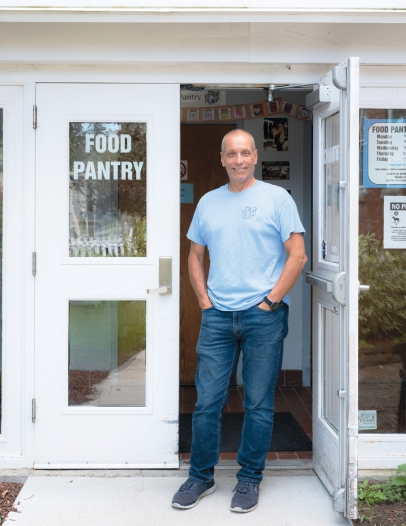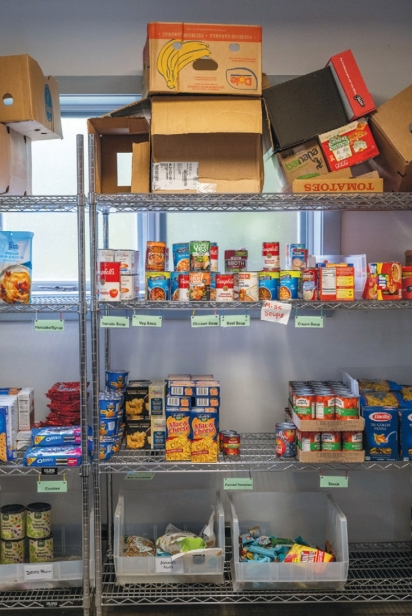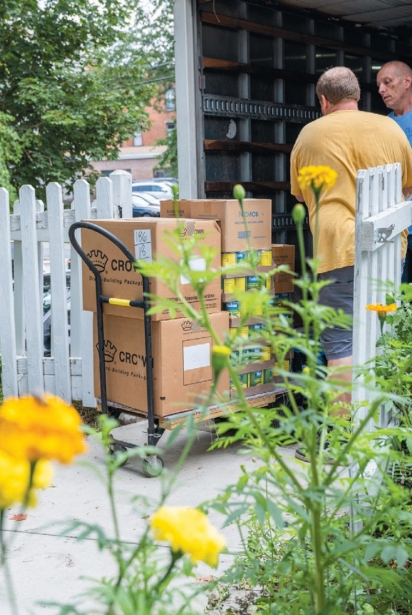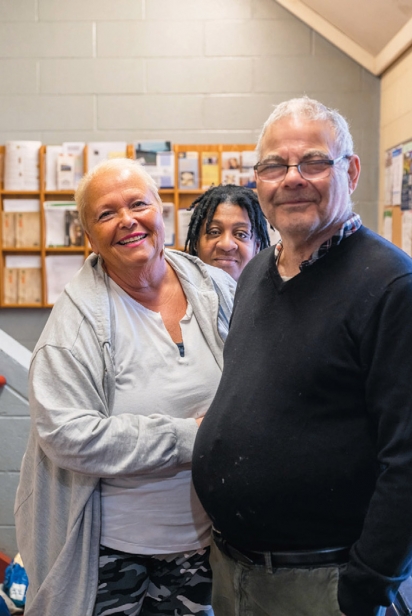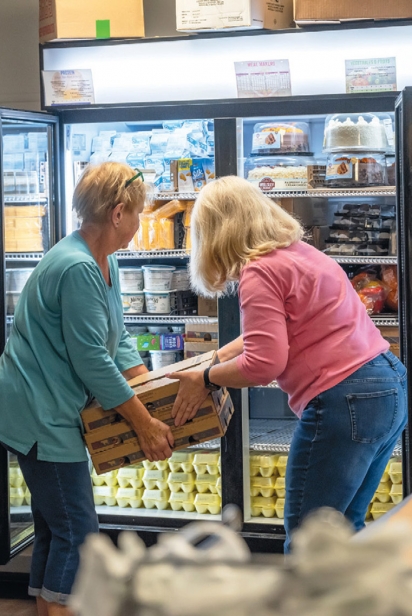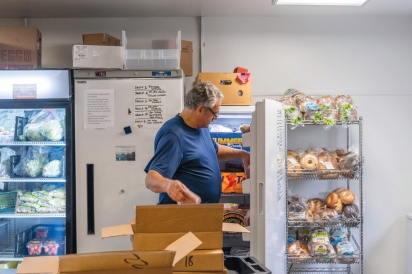How the Franklin Community Center Tackles Income Disparity
Across the world, the issue of income disparity seems to be getting worse.
Currently, people with total wealth of less than $10,000 account for about 52.5% of the world’s adult population and possess just 1.2% of the world’s money. The top 1.1% of the global adult population, with more than $1 million to their name, holds 45.8% of the world’s wealth, according to Credit Suisse’s annual Global Wealth Report.
Mulling through those numbers and considering the broader implications often feels like trying to make sense of a fun house mirror: The proportions don’t—and were never meant to—add up.
And while those data may be tough to wrap your mind around, the ever-rising number of human beings suffering in our own communities tends to bring the problem into stark focus. Saratoga Springs, nicknamed Queen of the Spas and made famous as a center of thoroughbred horseracing and rarefied country chic living, has drawn attention in recent years for its alarming levels of disparity.
“In the 40 years since the Franklin Community Center opened, there has never been a greater need for what we do,” says John Falco, the food pantry and facilities manager at the Franklin Community Center. “Since the beginning of 2022 alone there has been a 26% increase in the number of people we are seeing at our food pantry. In July, we had the highest number of families on record come in here—357, which accounted for more than 1,000 people.”
The facts support his anecdotal observations. One recent study from the nonprofit Economic Policy Institute in Washington, DC, placed Saratoga County as number 28 in income inequality nationally, in a list of 3,061. (That list puts Saratoga County at 28 ahead of notorious bastions of inequality like San Francisco, Los Angeles, Westchester County and New York City.)
More than one-third of all families in New York can’t afford basic needs, like food and rent. We’ve all seen the evidence of more and more people struggling to make fraying ends meet amid rising costs and stagnating wages.
“Since the beginning of 2022 alone there has been a 26% increase in the number of people we are seeing at our food pantry. In July, we had the highest number of families on record come in here—357, which accounted for more than 1,000 people.”
—John Falco
Typical Person
“There is no typical client who comes to us,” Falco says. “I can say that it’s everyday people. More than 60% of our clients come directly from Saratoga Springs. We serve some people with zero income, and we also serve families who together bring in $100,000 a year, but need a little something to get by in that particular month.”
He says that no one is turned away, even if, on paper, they seem stable.
“We know if they’re coming to us, they need food,” Falco says.
While Falco estimates that around 85% of their clients are return visitors, he says they are finding an increasing number of new faces come in every week.
“The need has risen because even if people see their bills go up, they’re still often making do with the $50,000 or $60,000 they’ve been bringing in for several years,” Falco says. “If their utilities go up $500 a year, that money has to come from somewhere. A lot of the people we work with are stretching to make ends meet, and we are here to just make that stretch a little bit easier.”
An ’Army’ of Volunteers
Falco has been the food pantry and facilities manager at Franklin for four years. Before that, he worked there part time.
“I had been working in restaurants since I was a preteen, for about 40 years,” Falco says. “I’ve seen and done it all in restaurants, from busing tables to managing the entire food service.”
During COVID, when everything shut down—including the restaurant where he worked—and the need for Franklin’s services grew, Falco found that he, like many people, began to rethink his personal and professional priorities.
“I missed out on so much,” he says. “I’m a father and a grandfather, but because the restaurant world requires nights, weekends and holidays, I couldn’t make a lot of the major events in my family.”
He was tired of it—and he saw a profound need in the community, and felt a new sense of fulfillment in meeting that need. Falco, in turn, provided the army-style rigor restaurant operations are often famous for but nonprofits can sometimes lack.
“I came on here full-time because it was the right move for all of us,” Falco says. “I could bring in the processes and systems that make restaurants work so efficiently, and at the same time, I could have my life back. Plus, I love working with the army of volunteers here, and the staff. It’s a warm place with a real mission, which you don’t find often.”
Falco reorganized the pantry’s food storage system, which sprawls across two large rooms containing fridges that hold fresh produce, meat, fish and dairy products, and shelves with pantry and hygiene items.
“It was already pretty organized, but I streamlined it,” he says. “I made sure that everything was rotated out, so that the oldest items were at the front, to help ensure nothing goes bad or goes to waste.”
Falco also helped introduce an Instacart style ordering system to Franklin, so that first-time and return clients could log on, share their financial information and family size and make their orders accordingly.
Franklin’s executive director, Kari Cushing, says Falco has been “instrumental in growing our food pantry to the program it is today.”
Cushing says that in addition to increasing “efficiency so that we can keep up with the rising demand,” he focuses on the whole person and not just the task at hand.
“John ensures that we are able to provide healthy, balanced meals to those in need, with dignity, giving our clients choices, support and friendship,” Cushing says.
Everyone has access to fresh and canned produce, dairy, eggs, fish, meat and pantry staples like beans, cereal, cookies and pasta. The amount they can order will depend on their family size. Franklin also offers beauty and hygiene products, diapers, dog and cat food. There’s a generous “extra’s table” with a rotating menu of items from the grocery stores and bakeries that donate food, like muffins, bagels and donuts.
Franklin Community Center by the Numbers
Parsing the philosophy and paradigm of a nonprofit is one thing, but assessing the numbers is another. Franklin Community Center releases an annual report that gives donors and community members a bird’s-eye view into its activities:
216,069 pounds of food and products were donated to the food pantry by community members
27,196 requests for food, housing, clothing, aid and transportation were received
9,001 children, adults and seniors received food assistance
562 children received holiday gifts through their gift drive
6,495 children, adults and seniors received clothing and household goods at the Free Store
To learn more about donating your time, goods or money, call 518-587-9826.
Franklin Community Center is located at 95 Washington Street in Saratoga Springs.
“At Franklin, we try to have everything that anyone would need to feed themselves three meals a day for three to five days,” Falco says. “We really act as a Band-Aid for people going through a tough time. We do limit visits to once a month but refer people to other services and organizations as needed.”
How It Works
Clients make an order through the online system and schedule a 15-minute slot for pickup, Monday through Thursday from 9 am to 4 pm. They indicate how they’ll be transporting the food—by car, bus, bike or on foot—so volunteers know how to pack the food up. Typically, he says, his crew of volunteers shop and pack for about 23 different families in a day. When the clients come in to pick up their food, they often stop to chat with Falco, other staffers and the volunteers, and grab a bag of the free goodies on the table by the door.
“Almost without exception, everyone is grateful and very kind,” Falco says. “We know a lot of the people well now. It’s very much a community.”
Franklin works in conjunction with a cooperative of 70 other nonprofits called the Food Pantries for the Capital District to share knowledge and resources and refer clients and windfalls to each other.
“If we get a call offering us a big donation of food, we accept it,” Falco says. “I know that even if we can’t use dozens of cases of chicken tenders, between all of the organizations we work with, that food won’t get wasted.”
The Franklin Community Center does more than “just” help struggling community members with food. Franklin also offers clothing and household goods, after-school programs and a holiday gift program for children in need.
“I am so proud to have led this agency for the past 20 years, but it is our community who makes our work possible,” Cushing says. “We are only able to provide the services we do because of the collective efforts of local residents, businesses and people willing to pitch in to support the less fortunate members of our community. It is so incredible to watch our community members lift each other up each and every day—it is exactly what a community should be.”
If you want to help, Franklin accepts donations of money, canned and boxed food, hygiene and toiletry items.
“We can use everything, but sometimes $10 can go so much further than people think,” Falco says. “We order from the Regional Food Bank of Northeastern New York, and can sometimes get frozen meat for $0.16 a pound, because they receive donations from farmers, manufacturers, retailers and wholesalers.”
And toiletry and hygiene items are at a premium.
“People with SNAP benefits can’t use that money to buy toilet paper or soap,” Falco notes. “So often, I see people choosing between soap and diapers and a utility bill. Not a good place to be in.”
Definitely not—thankfully, Franklin is there to lend a hand and help them over to the other side.


